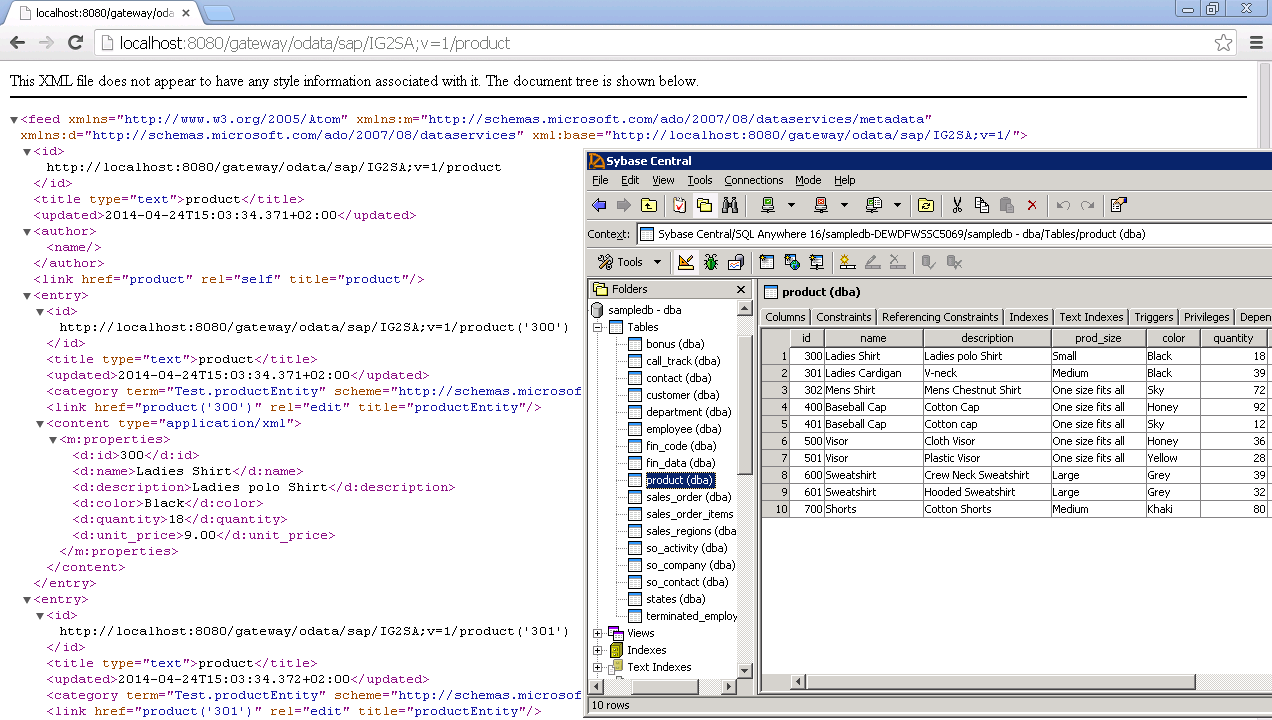Because you can also install SMP3 together with the MBO Runtime, you might try out to connect the integration gateway to some SQLAnywhere databases which are part of the MBO Runtime.
In the following I will connect the integration gateway to the sampledb. This is a SQLAnywhere 16 database running on port 5500.
- Prepare SMP
There is no need for us to import any (OSGi enabled) JDBC driver, because there is already a suitable jdbc driver within SMP3 available.
(Info: The jar archive com.sap.com.sybase.jdbc.jconnect_7.0.7.1.jar contains the jar archive jconn4-7.07.jar which contains a SybDriver class, under \com\sybase\jdbc4\jdbc) - Create Destination
In Gateway Management Cockpit create a new destination
| Property | Value |
|---|
| Destination Name | DestSQLAnywhere |
| Destination Type | DATABASE |
| Destination URL | jdbc:sybase:Tds:localhost:5500?ServiceName=dba |
| Database Driver | com.sybase.jdbc4.jdbc.SybDriver |
| Authentication Type | Basic Authentication |
| User Name | dba |
| Password | sql |
This assumes that your database is running on the host "localhost" on port 5500 with default user and password (dba/sql). You might have to adapt the values to fit your environment.

- Create an odata model in GWPA eclipse plugin, make sure to name the entityset exactly like the database table name and the properties exaclty like the table columns. After modelling, implmenet the service, select as data source JDBC and "generate and deploy" the service to integration gateway.

- After that add destination in Gateway Management Cockpit and save it.

- Test the service by clicking on "Open Service Document" and then navigate to /product/ to see all data inside the product table...

- That's it!
As you can see the data coming from the Sybase SQLAnywhere database is exposed in OData.
Info: Use Sybase Central (scjview.exe) to maintain the SQLAnywhere database. You can connect to the sampledb by using the connection string: jdbc:ianywhere;host=localhost:5500

